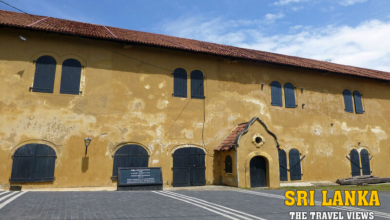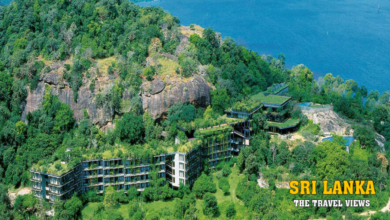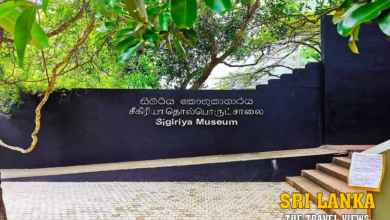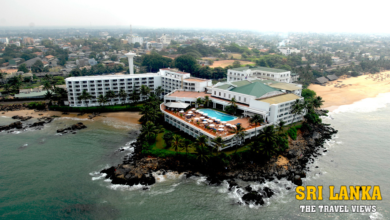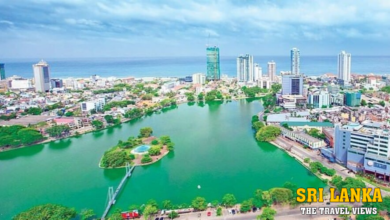Jami Ul-Alfar Mosque
Introduction
Jami Ul-Alfar Mosque, colloquially known as the Red Mosque, stands as an architectural gem in the heart of Colombo, Sri Lanka.This iconic building weaves together a rich tapestry of spirituality, history, and culture that goes beyond its use as a place of worship. We will go on a journey to learn about the fascinating history that led to the mosque’s construction, admire its unique architectural features, and consider the significant cultural influence it has had on the city and its residents.
Jami Ul-Alfar Mosque has stood as a constant reminder of Colombo’s development since its modest beginnings in the late 19th century. Constructed in 1908 under the direction of Indian Muslim Habibu Labbe Saibu Labbe, who made Colombo his home, the mosque stands as a testament to the tenacity of the local Muslim community as well as a sacred site. Its key location in the bustling Pettah market district highlights its dual function of fusing religious and commercial elements, making it a central figure in the history of the city.
Historical significance of Jami Ul-Alfar Mosque
The late 19th century, when the local Muslim community in Colombo first imagined a place of worship that would go beyond religious boundaries, is when the Jami Ul-Alfar Mosque got its start. The building of the mosque was started in 1908 with Habibu Labbe’s supervision. Saibu Labbe, an Indian Muslim who took refuge in Colombo, initiated a lasting legacy. The mosque’s location, which was well-chosen to provide more than just a place for prayer in the middle of the busy Pettah market area, became essential to the fusion of religious and commercial life.
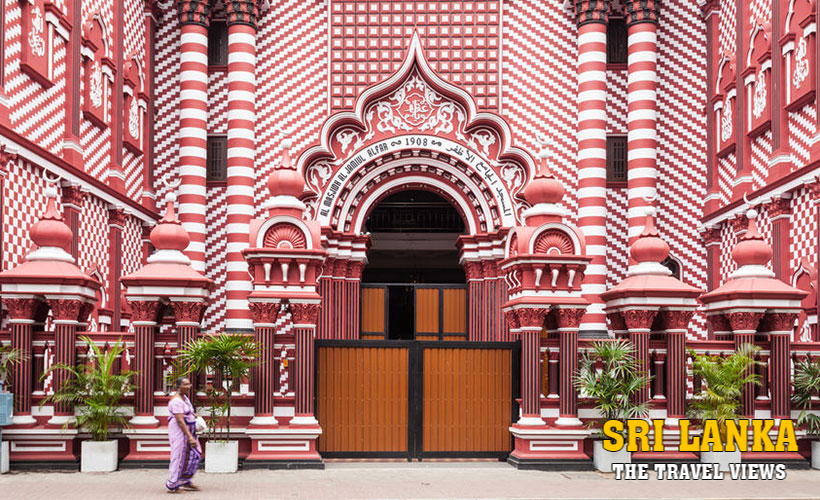
The Jami Ul-Alfar Mosque silently observed the dramatic shifts in Colombo’s history as the decades passed. Its distinctive red-and-white-striped exterior served as a symbol of the peaceful coexistence of various communities in addition to reflecting the multicultural influences that were common during its construction. The mosque changed from being a mere building to a dynamic symbol of the local Muslim community’s tenacity and continuity through social change and the passage of time.
Beyond its physical construction, Jami Ul-Alfar Mosque has historical significance. It represents the customs and common experiences of the many generations who have found comfort inside its walls. We discover a history of religious harmony, cultural fusion, and unwavering dedication to maintaining Colombo’s distinctive identity as we delve into the city’s past.
Architectural Marvel – Jami Ul-Alfar Mosque
The architectural genius of Jami Ul-Alfar Mosque goes well beyond its colorful façade. Entering its interior, one finds a large prayer hall with ornate decorations and soaring arches. With its meticulous attention to detail and Mughal-era geometric patterns, the architectural style is a captivating blend of Indo-Islamic and Indian vernacular elements. Encircled by cloistered arcades, the mosque’s courtyard offers a calm area for prayer and meditation, a peaceful haven in the middle of Pettah’s bustling energy.
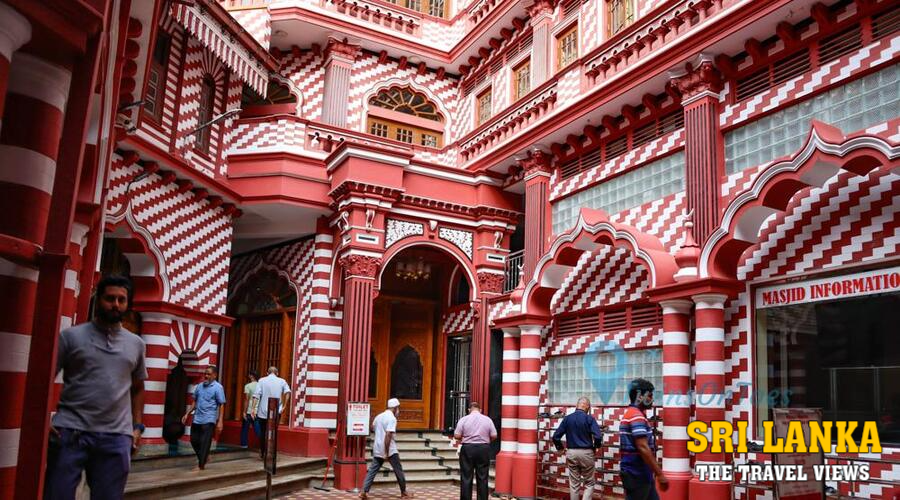
An iconic feature of the mosque, the minaret stands tall as a practical element meant to amplify the call to prayer throughout the Pettah district, as well as a symbol of religious identity. Traditional methods have been superseded by technological advancements, but the minaret endures as a testament to architectural genius and cultural continuity, transcending its utilitarian function to become a timeless symbol of faith.
The architectural wonders of Jami Ul-Alfar Mosque extend beyond its physical form into a spiritual and aesthetic domain, beckoning guests to observe the harmonious fusion of tradition and modernity that characterizes this hallowed area.
Cultural Impact
The Jami Ul-Alfar Mosque has had a lasting impact on Colombo’s cultural landscape in addition to its stunning architecture. It hosts numerous community gatherings and acts as a focal point for communication and understanding amongst faiths. Its location in Pettah, a multicultural melting pot, highlights the mosque’s ability to bring people together. People from all walks of life come together for the annual Ramadan celebrations and cultural events, which foster unity and celebrate the rich tapestry of diversity that defines Colombo.
The cultural influence of the mosque permeates the visitors’ daily existence. It now serves as a testament to the city’s ability to embrace diversity and a symbol of unity. Events hosted there highlight the value of cross-cultural dialogue and understanding by bringing people from various backgrounds together. In addition to being a place of worship, Jami Ul-Alfar Mosque serves as a bridge between cultures, enhancing Colombo’s communal life.
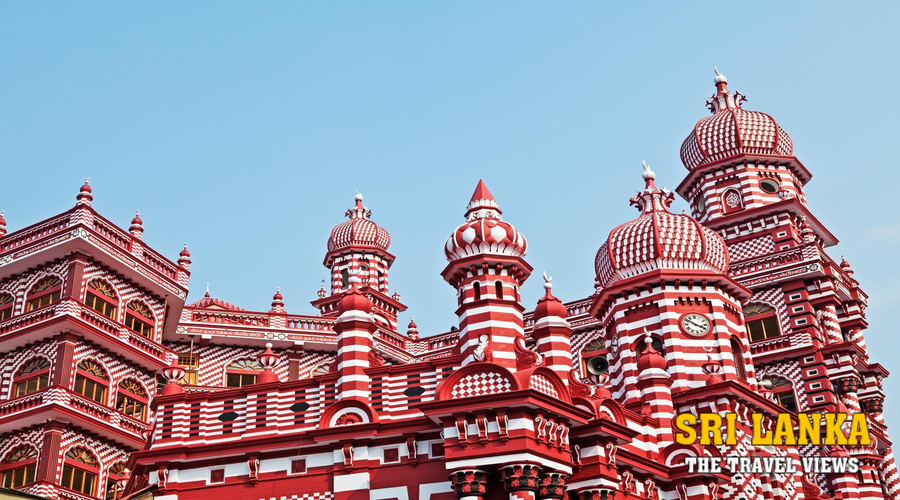
The visitors’ everyday lives are impacted by the mosque’s cultural influence. It now acts as a symbol of unification and a tribute to the city’s capacity to embrace diversity. Events held there bring people from different backgrounds together and highlight the importance of cross-cultural understanding and dialogue. Jami Ul-Alfar Mosque improves Colombo’s communal life by acting as a bridge between cultures in addition to being a place of worship.
Conclusion
To sum up, Jami Ul-Alfar Mosque is more than just a physical building; it is a living record of the entwined histories of Colombo. The Red Mosque continues to stand as a testament to diversity and unity despite its long history, stunning architecture, and lasting cultural influence. Jami Ul-Alfar Mosque is a testament to Colombo’s ability to embrace its past while looking towards a harmonious and culturally rich future as the city continues to change. The mosque welcomes people to interact, educate themselves, and celebrate the rich diversity that genuinely distinguishes Colombo through its hallowed halls and lively events.

